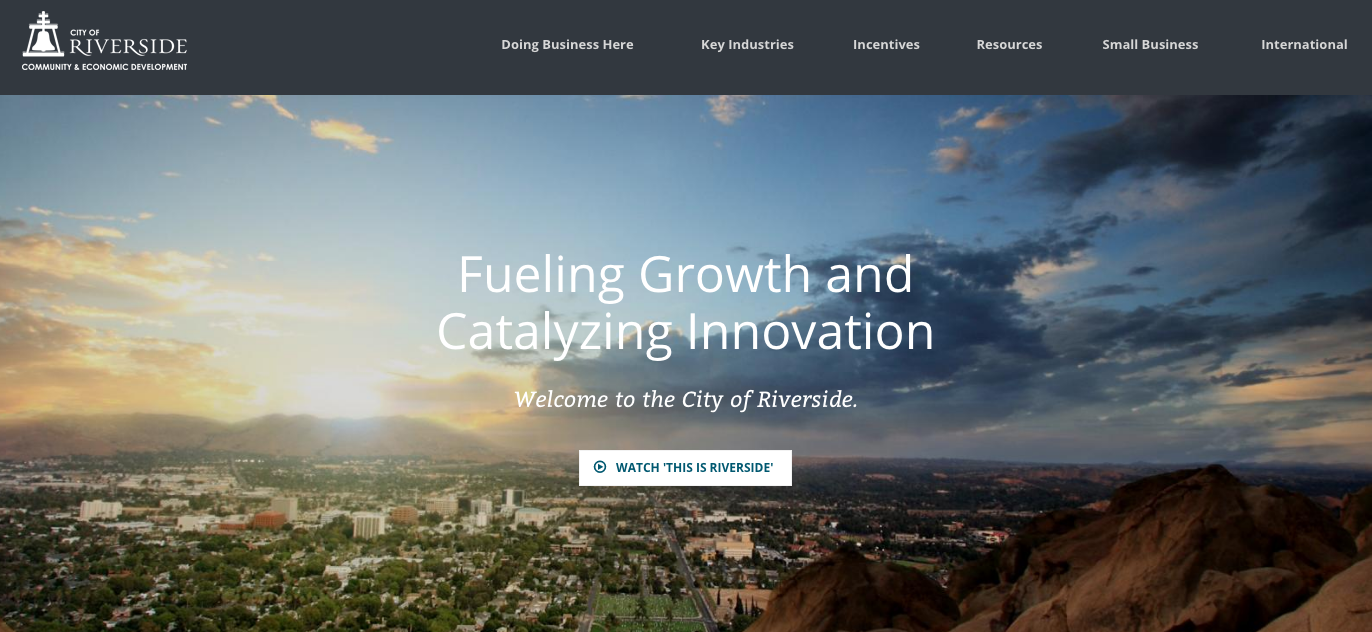This post was originally published on the ViewPoint blog, written by Tom Crosby.
We live in an age of customer service. From your local grocery store to e-commerce giants like Zappos, today’s businesses are acutely concentrated on the ease and personalization of their customers’ experiences.
Having long been the norm in the private sector, this emphasis on customer-centric service is quickly becoming the new standard for local governments.
So who’s taking on this responsibility?
It seems there’s a renaissance happening in the roles of Community Developers and Planning Officials, as they are increasingly tasked with the broad mission of building a citizen-centric government.
Achieving this is no easy task, as citizens now expect a more sophisticated level of service from their government, comparing their experiences to their everyday interactions with the private sector. It is often Community Development officials who are responsible with trying to bridge the gap.
Modernizing Citizen Services in Riverside, CA and Portsmouth, NH
To learn more, we sat down with Rafael Guzman, Director of Economic and Community Development in Riverside, California and Rick Taintor, Planning Director in Portsmouth, New Hampshire to talk about how Community Development officials are updating citizen service for 2017. Their roles, though different in name, are much alike in mission.
“When we really started looking at various inefficiencies in our software systems, we uncovered six or seven different areas where we weren’t helping our [citizens] as best we could,” said Guzman.
Bringing 15 years of experience to his current role, Guzman is part of a new breed of government employee who seeks to provide the same experience at the local government level that you would expect from the likes of Google, Amazon, or Facebook. A significant part of why he was tapped for this position was his expertise in increasing a municipality’s permitting efficiency.
One of his first orders of business after arriving in Riverside was to overhaul the city’s software solutions, which included bringing on new vendors to facilitate their permitting and licensing processes.
“Ultimately, the biggest game changer was the real-time dimension of permitting. The information exchange between departments was a big gap for us, and by having a unified dashboard for both customers and employees, we were able to tie the whole experience together.”
Improving their permitting workflow has led to other major changes, most notably a physical reorganization of City Hall. To boost efficiency and communication, Riverside plans to have everyone involved in Development Services working in one central location. “We have an umbrella term for the initiative called ‘Streamline Riverside,’” says Guzman. You can visit the digital manifestation of this initiative here.

City of Riverside’s customer-centric website design
This hybrid software-“hardware” approach achieves three important goals:
- Applications are routed via digital interface to the correct individuals at City Hall, and discussed as they arrive.
- The committee is able to review and process applications in real time with better consistency and more regularity.
- Most importantly, the applicant is able to sit in on a singular review, in which everyone is on the same page.
“[Our new software systems] provide a sense of certainty that is important to customers, and that didn’t previously exist,” said Guzman. “When we looked at our turnaround for some departments, it was getting into four, five, six weeks before an application was addressed. By introducing the ability to manage and monitor our internal workflows, not only did we increase transparency, but we increased citizen satisfaction. It wouldn’t have been possible without these software solutions in place.”
Rick Taintor, Director of Planning & Development for the City of Portsmouth, NH, has been involved with implementing similar changes in his community.
“One issue we run into frequently is trying to determine how to apply a particular regulation when no case is ever the same,” said Taintor. “We see cases come up all the time that we’ve never dealt with before.”
A recent example was figuring out how to deal with an influx of microbreweries in the Portsmouth area.
“When [microbreweries] started taking off here, they weren’t defined in our table of use regulations,” said Taintor. “We couldn’t figure out whether they should be designated as restaurants, or manufacturers, or how exactly we were going to handle them.” He explained that instances like these require officials to bring creativity to their role.
“In some ways, you need to make things up as you go along. You need to decide what makes sense as a rule, and then figure out how you’re going to apply that in the future. Are you going to amend the regulations to set that in stone, or just remember that’s how you dealt with it in the past, and try to be consistent in the future?”
The Unexpected Benefits of Customer Service Training
In Riverside, an important part of creating this consistency across departments was to provide every government employee with a unique customer service training experience.
“This exercise really challenged us to look critically at our processes—ultimately, we were asking ourselves ‘how can we wow the [citizen]?’” said Guzman.
There was one important and unexpected side effect of the training program. “As everyone started to get on the same page, we realized that a lot of our systems were redundant, and as a result, we started to shave a lot of time off of the citizen service experience.”
By analyzing data from their software solutions, and using it to redesign the in-person experience, the city saw a fundamental shift in the way it processed applications and interacted with customers.
Of course, not every municipality has the budget, appropriate staff, or bandwidth to undergo group training, or purchase new software packages. However, Guzman was adamant that these types of changes don’t necessarily require throwing money at the issues.
“The biggest takeaway for me was that improving the citizen experience starts with engaging your customers,” said Guzman. “We wouldn’t have had the successful takeoff we did if we didn’t invite our community to provide their input. It doesn’t require a big budget to sit down with the various stakeholders and ask how they’re doing.”
Guzman suggested that smaller communities trying to achieve these types of goals should set up a working focus group. “Once you get into that experience and start to develop a rapport with them, you’ll learn a lot about how your shop is perceived, and more importantly, you’ll find that there are a lot of zero-cost ways to solve problems that have a lot of impact,” said Guzman.
Using Citizen Input to Plan for the Future
Taintor has had similar successes by interfacing with his citizens in Portsmouth. “One of the things that’s part of a planner’s training and work environment is working with the public. You need to go to meetings and get input from people,” he said.
“Unlike an engineer that focuses on metrics and lots of objective measures, or the building department which has a defined code to work with, [planning and development officials] are working on more subjective issues. We’re dealing with people’s opinions and values, people’s desires for the future. In my opinion, that’s why the position is becoming more future-oriented and reliant on technology — problem solving for the community is one of the biggest parts of the job.”
By May 2017, Riverside will have completed work on the one-stop location that will house all of their development services. The new complex, which will process between 300 and 400 customers per day, is also backed by a complex network of software systems, including a customer management system, an e-plan review workflow, and a digital customer kiosk bank. Working together, these systems will map out the entire application process for the customer.
These systems are also mirrored on Riverside’s Department of Economic Development website, which is unique in that it connects all departments, helping streamline the process by keeping all involved officials at the same place in the life of an application.

Riverside’s new Community & Economic Development website
Other new capabilities include the ability to gather data on how long a given customer waits in line, to evaluate how long each application takes to process, and an automated follow-up system for customer feedback surveys. Together, these initiatives represent the city’s commitment to creating a seamless customer service experience long overdue at the municipal level.
Sharing the Love with Other Local Governments
There is a strong spirit of community amongst local governments in this county, and as such, Guzman and his team are happy to share their story with other municipalities who are starting to think about modernizing their citizen services.
“We’ve had a number of cities come in to talk with us, and it’s been very well received,” said Guzman. Their team has even made road trips to other cities to help educate interested officials. “Once you get your staff behind making these types of changes, and you build that initial momentum, the exchange of ideas and information grows exponentially.”
Ultimately, when these ideas are disseminated, everybody wins. “The idea is that when you increase efficiency, you create more business, and that in turn attracts more wealth to the community,” said Guzman, reiterating that these goals are within reach, even for smaller governments.
“Even with a small staff and a limited budget, sweat equity goes a long way. Simply by getting everybody together, and getting unilateral support across the board, our budget committee saw that they had a willing partner in change, and that’s how we got where we are today.”
Guzman and Taintor serve as examples for other local government officials looking to modernize their municipality’s citizen service. Doing your research and talking to community members to better understand their experiences will help pinpoint high-impact areas that can be immediately addressed. They advise project leaders to be creative with available resources, and most importantly, to continue learning from each step of the process. When the time comes to choose the right software solution, this groundwork will help you make an informed decision based on facts, data, and the best interest of your citizens.





Leave a Reply
You must be logged in to post a comment.